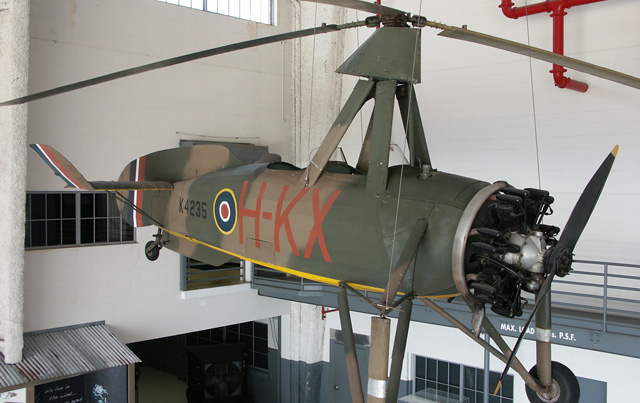
1934 Cierva C.30-A Autogiro
In 1924 Spain, Don Juan de la Cierva produced the first autogiro by affixing a rotor on a pylon and mounting it on a fuselage of a World War I Avro 504 aircraft.
After several crashes and redesigns, he figured out how to make it fly and began to produce and display them. Because they had fixed rotor-heads, the earlier machines used movable control surfaces like an airplane for control.
With the production of the C.30, the autogiro began to come into its own—equipped with a control column extending down to the cockpit where the pilot could control the autogiro by tilting the rotor head. When the pilot moves the stick sideways, the autogiro assumes the corresponding angle of bank. When he pushes the column forward, the rotor tilts back, increasing the angle of attack, and the autogiro climbs. Yaw is still controlled like an airplane, with foot pedals operating a rudder at the rear. This new control system gave the pilot far more control than the earlier versions.
Specifications
- Year Built — 1934
- Rotor Diameter — 37′
- Cruise Speed — 100 mph
- Engine — Engine — Armstrong Siddeley Genet (140 hp)
Kermit’s Comments
A helicopter can hover at zero airspeed because its engine turns the rotor blades at an angle that deflects the air DOWN. When the lift created is more than the weight of the helicopter, it will rise up and hover. However, an autogiro cannot hover like a helicopter because there is no power to the rotor blades. The rotor blades are free to spin and are not connected to the engine. Through a process called “auto-rotation,” the autogiro must have forward movement to keep the blades spinning. For this process to work, the airflow must hit the rotor blades at an angle from below; therefore, the airflow must travel UP through the blades. Because of the principal of auto-rotation, should the engine quit in a helicopter, it soon becomes an autogiro as the air begins to flow upward through the rotor blades. As long as the pilot maintains forward speed, the aircraft can glide down to a safe landing, albeit rather quickly!